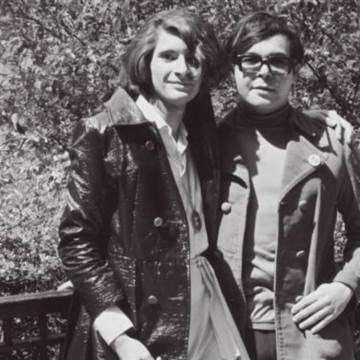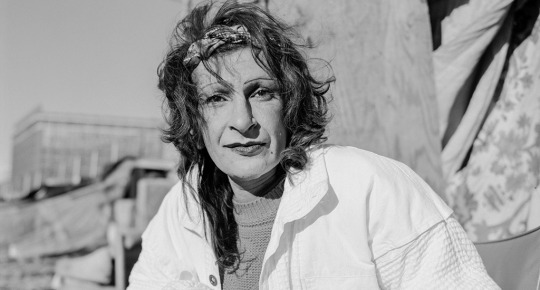Quote
I left home at age 10 in 1961. I hustled on 42nd Street. The early 60s was not a good time for drag queens, effeminate boys or boys that wore makeup like we did.
Back then we were beat up by the police, by everybody. I didn’t really come out as a drag queen until the late 60s.
When drag queens were arrested, what degradation there was. I remember the first time I got arrested, I wasn’t even in full drag. I was walking down the street and the cops just snatched me.
We always felt that the police were the real enemy. We expected nothing better than to be treated like we were animals-and we were.
We were stuck in a bullpen like a bunch of freaks. We were disrespected. A lot of us were beaten up and raped.
When I ended up going to jail, to do 90 days, they tried to rape me. I very nicely bit the shit out of a man.
I’ve been through it all.
In 1969, the night of the Stonewall riot, was a very hot, muggy night. We were in the Stonewall [bar] and the lights came on. We all stopped dancing. The police came in.
They had gotten their payoff earlier in the week. But Inspector Pine came in-him and his morals squad-to spend more of the government’s money.
We were led out of the bar and they cattled us all up against the police vans. The cops pushed us up against the grates and the fences. People started throwing pennies, nickels, and quarters at the cops.
And then the bottles started. And then we finally had the morals squad barricaded in the Stonewall building, because they were actually afraid of us at that time. They didn’t know we were going to react that way.
We were not taking any more of this shit. We had done so much for other movements. It was time.
It was street gay people from the Village out front-homeless people who lived in the park in Sheridan Square outside the bar-and then drag queens behind them and everybody behind us. The Stonewall Inn telephone lines were cut and they were left in the dark.
One Village Voice reporter was in the bar at that time. And according to the archives of the Village Voice, he was handed a gun from Inspector Pine and told, “We got to fight our way out of there.”
This was after one Molotov cocktail was thrown and we were ramming the door of the Stonewall bar with an uprooted parking meter. So they were ready to come out shooting that night.
Finally the Tactical Police Force showed up after 45 minutes. A lot of people forget that for 45 minutes we had them trapped in there.
All of us were working for so many movements at that time. Everyone was involved with the women’s movement, the peace movement, the civil-rights movement. We were all radicals. I believe that’s what brought it around.
You get tired of being just pushed around.
STAR came about after a sit-in at Wein stein Hall at New York University in 1970. Later we had a chapter in New York, one in Chicago, one in California and England.
STAR was for the street gay people, the street homeless people and anybody that needed help at that time. Marsha and I had always sneaked people into our hotel rooms. Marsha and I decided to get a building. We were trying to get away from the Mafia’s control at the bars.
We got a building at 213 East 2nd Street. Marsha and I just decided it was time to help each other and help our other kids. We fed people and clothed people. We kept the building going. We went out and hustled the streets. We paid the rent.
We didn’t want the kids out in the streets hustling. They would go out and rip off food. There was always food in the house and everyone had fun. It lasted for two or three years.
We would sit there and ask, “Why do we suffer?” As we got more involved into the movements, we said, “Why do we always got to take the brunt of this shit?”
Later on, when the Young Lords [revolutionary Puerto Rican youth group] came about in New York City, I was already in GLF [Gay Liberation Front]. There was a mass demonstration that started in East Harlem in the fall of 1970. The protest was against police repression and we decided to join the demonstration with our STAR banner.
That was one of first times the STAR banner was shown in public, where STAR was present as a group.
I ended up meeting some of the Young Lords that day. I became one of them. Any time they needed any help, I was always there for the Young Lords. It was just the respect they gave us as human beings. They gave us a lot of respect.
It was a fabulous feeling for me to be myself-being part of the Young Lords as a drag queen-and my organization [STAR] being part of the Young Lords.
I met [Black Panther Party leader] Huey Newton at the Peoples’ Revolutionary Convention in Philadelphia in 1971. Huey decided we were part of the revolution-that we were revolutionary people.
I was a radical, a revolutionist. I am still a revolutionist. I was proud to make the road and help change laws and what-not. I was very proud of doing that and proud of what I’m still doing, no matter what it takes.
Today, we have to fight back against the government. We have to fight them back. They’re cutting back Medicaid, cutting back on medicine for people with AIDS. They want to take away from women on welfare and put them into that little work program. They’re going to cut SSI.
Now they’re taking away food stamps. These people who want the cuts-these people are making millions and millions and millions of dollars as CEOs.
Why is the government going to take it away from us? What they’re doing is cutting us back. Why can’t we have a break?
I’m glad I was in the Stonewall riot. I remember when someone threw a Molotov cocktail, I thought: “My god, the revolution is here. The revolution is finally here!”
I always believed that we would have a fight back. I just knew that we would fight back. I just didn’t know it would be that night.
I am proud of myself as being there that night. If I had lost that moment, I would have been kind of hurt because that’s when I saw the world change for me and my people.
Of course, we still got a long way ahead of us.
Sylvia Rivera (via sylviarivera)
115 notes
·
View notes
Photo
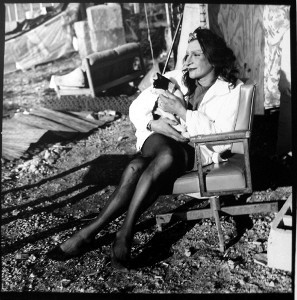
“I remember singing but I haven’t overcome a damn thing. I’m not even in the back of the bus. My community is being pulled by a rope around our neck by the bumper of the damn bus that stays in the front. Gay liberation but transgender nothing! I am tired of seeing homeless transgender children; young, gay, youth children. I am tired of seeing the lack of interest that this rich community has. This is a very affluent community. When we can afford to rerenovate a building for millions and millions of dollars and buy another building across the street and still not worry about your homeless children from your community, and I know this for a fact, because… I saw many of the kids before the building was being renovated up the street, many of the children are sleeping on the steps of that church…”
35 notes
·
View notes
Photo
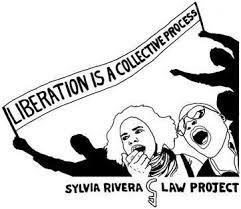
The Sylvia Rivera Law Project. A project that was not created by Rivera herself, but an organization aimed to help low income transgendered individuals to remain off the streets. In order to do this, their approach and goal in mind is to create a community that prevents discrimination by educated people and raising awareness. For oppressed people who are constantly victimised and are suffering the SRLP is a platform to provide them with tools to help ‘fight their own liberation.’
For this project to strive and succeed, many others must stand behind the SRLP. The birth of this project and inspiration over that night that occurred many years ago at Stonewall, exemplifies that if Rivera will be a fighter for the truth, that collectively we can as well. Just like Rivera stated in her interview with Feinberg, “…we still got a long way ahead of us.” An organization such as the SRLP to succeed requires ambitious individuals to remain ambitious and to not give up the fight of the dominant heteronormative society.
1 note
·
View note
Photo

In 2005, the corner of Christopher and Hudson streets was renamed “Sylvia Rivera Way” in her honour
8 notes
·
View notes
Photo

Sylvia Rivera pictured in Randy Wicker’s store.
13 notes
·
View notes
Photo
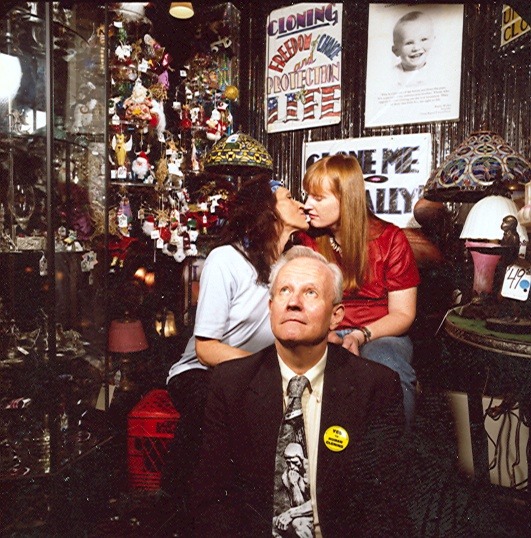
Sylvia Rivera, Julia Murray & Randy Wicker at Wicker’s Lighting store, Uplight Lighting.
38 notes
·
View notes
Video
youtube
“Author and activist Liz Plank sheds a spotlight on these women and what happened to them afterwards, including how they helped create the group Street Transvestite Action Revolutionaries (STAR).”
0 notes
Text
“Hell hath no fury like a drag queen scorned" - Sylvia Rivera
Sylvia Rivera joined the Gay Activists Alliance (GAA) during 1970, just after the Stonewall Riot. During this time, there was intensive work and drive being put into the campaign for the New York City Gay Rights Bill to be passed. Though Rivera was devoted to the movement and extremely concerned for the rights and freedom of all queer people, her intense energy and push for trans inclusion was often seen as “too radical.” When the bill was eventually passed in 1986, it had no inclusion of language pertaining to the need and rights of trans people, drag queen, and/or other gender-variant people to receive protection or support at a government level. Indeed, they were totally and completely excluded, mainly due to the unfortunate, yet still insensible, need for more conservative leaders of the government to accept the bill.
After this massive rejection and exclusion from a community that was allegedly all-embracing, Rivera decided to retract from that environment and became disillusioned with the gay rights movement in general. This is when she and Marsha P. Johnson initially collaborated to found S.T.A.R. - though that organization eventually faced monetary and zoning problems, which lead to time off the grid. Extremely disheartened and disappointed by the lack of support, respect, and recognition by the gay rights movement during this time, Sylvia attempted suicide, but failed.
Though she faced rejection and dismissal many times, Sylvia continued to work for gay rights in her own discrete, unique way. Under Sylvia’s direction, S.T.A.R. eventually reformed in 2001. They continued to work for trans rights and inclusion in legislation and more specifically in the Human Rights Campaign. No matter the backlash Sylvia Rivera received from various groups of people, she was consistently and passionately involved in activism that is still not as as relevant or, for that matter, simply recognized as it should be in the feminist movement. However, there is hope that these issues will be rectified and acknowledgement that there is still more work need to be done.
0 notes
Text
SYLVIA RIVERA LAW PROJECT
Sylvia Rivera Law Project, or SRLP, was founding by white, queer, trans activist Dean Spade.
This organization “provides access to social services, health services, public education, and legal services for transgender, intersex, and gender non-conforming individuals, while also teaching them how to engage politically, building leadership and organizing committees and empowering them to take action.”
They are based and located in 147 W. 24th Street, New York, NY.
To donate or be added to their e-mail list visit: https://srlp.org/
#transrights#transgender#activism#sylvia rivera#dean spade#gayrights#inclusive feminism#feminist#srlp
0 notes
Link
Christopher Street Liberation Day Rally in Washington Square Park, NYC, 1973
“You all tell me, go and hide my tail between my legs.
I will no longer put up with this shit.
I have been beaten.
I have had my nose broken.
I have been thrown in jail.
I have lost my job.
I have lost my apartment.
For gay liberation, and you all treat me this way?
What the f**k’s wrong with you all?
Think about that!”
0 notes
Photo

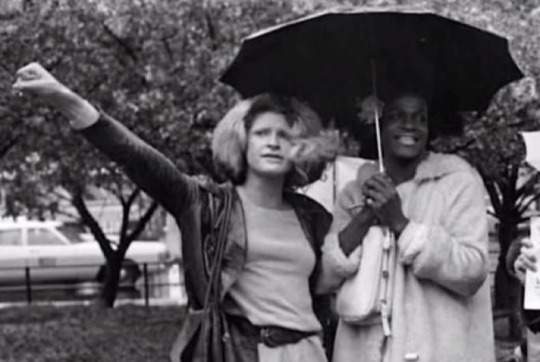
Sylvia River and Marsha P. Johnson
Transgender and Gay Rights Activists and Revolutionaries
#transgender#equalrights#queer#queeryouth#stonewallriots#revolution#lgbtq moodboard#gayrights#transrights#real feminism#feminist
0 notes
Text
S.T.A.R. & THE YOUNG LORDS
S.T.A.R.
Street Transvestite Action Revolutionaries was an organization founded in 1970 by Sylvia Rivera and Marsha P. Johnson, another transgender woman working hard for liberation. Due to personal experience, both knew what their community needed the most and how to best support them. The main focus of S.T.A.R. was to aid homeless queer youth by providing shelter and a community which they could trust and depend on but was also a safe space in general for gay, trans, and gender-fluid youth. In an interview with Rivera she states “STAR was for the street gay people, the street homeless people, and anybody that needed help at that time.”
In the beginning, Johnson and Rivera worked through hotel rooms. Their next designated location was a parked trailer truck, until one day it began moving without their knowledge. Finally, they were able to purchase a more permanent home. “We were trying to get away from the Mafia’s control at the bars. We got a building at 213 Second Avenue,” said Sylvia. All those who were part of S.T.A.R. collectively worked to fix the space and created a constant and solid livable home. According to Sylvia, there were several other chapters opened (NY, Chicago, California, & England).
THE YOUNG LORDS
The Young Lord were an organization of revolutionary Puerto Rican Youth. Sylvia came into contact with this group at a demonstration during the fall of 1970 in East Harlem, NY. Rivera recalled, “The protest was against police repression and we decided to join the demonstration with our STAR banner. That was one of the first times the STAR banner was shown in public, where STAR was present as a group.”
Rivera, and all of S.T.A.R., integrated with The Young Lords. She expressed her loyalty to the group and stated “It was just the respect they gave us as human beings. They gave us a lot of respect. It was a fabulous feeling for me to be myself—being part of the Young Lords as a drag queen—and my organization [STAR] being part of the Young Lords.” This in itself was a revolutionary act - two unconventional groups coming together, despite perceived differences, to represent intersecting identities and not only stand up for each other, but more importantly, unite to fight for their rights.
To read more: https://www.workers.org/2006/us/lavender-red-73/
0 notes
Text
“I am still a revolutionist.”
“I was a radical, a revolutionist. I am still a revolutionist. I’m glad I was in the Stonewall Riot. I remember when someone threw a Molotov cocktail, I thought, ‘My god, the revolution is here. The revolution is finally here!’ I always believed that we would have a fightback. I just knew that we would fight back. I just didn’t know it would be that night. I am proud of myself as being there that night. If I had lost that moment, I would have been kinda hurt because that’s when I saw the world change for me and my people. Of course, we still got a long way ahead of us.”
Sylvia Rivera quote from interview with Leslie Fienberg for workers.org
https://www.workers.org/2006/us/lavender-red-73/
3 notes
·
View notes
Link
0 notes


